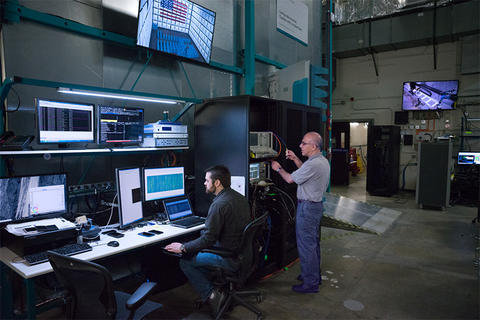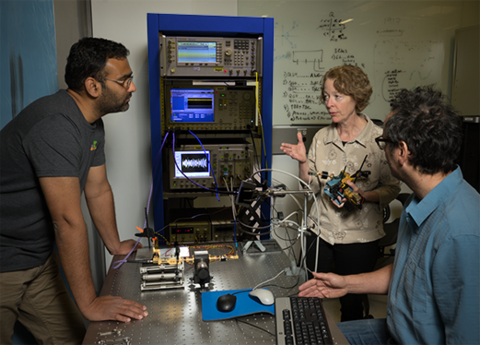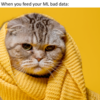Shared Spectrum Metrology Group
In an increasingly congested electromagnetic spectrum, modern radio frequency (RF) systems are being designed to operate in diverse environments filled with other devices that broadcast a wide variety of electromagnetic signals.

The National Institute of Standards and Technology Communications Technology Laboratory (NIST CTL) Shared Spectrum Metrology Group develops metrology tools and methodologies to address the spectrum crunch. The group specializes in three core areas to rapidly address ever-changing spectrum sharing challenges:
- Wireless coexistence: the need to understand a system’s response and impact on the overarching radio frequency (RF) environment
- Spectrum sensing and noise: novel approaches merging thermal noise metrology with studies of distributed systems to address spectrum challenges such as wireless forensics
- Cellular System interoperability: quantifying a system’s ability to work with other components while ensuring robust performance
- Physical measurements to support cybersecurity assessments: developing measurements the provide insight into whether a wireless system has been compromised
The Shared Spectrum Metrology Group supports the wireless industry and its need for practical, rapid, and accurate test approaches by contributing to the development of standardized test methods for wireless devices. Examples include new test methods for characterizing wireless coexistence, Open Radio Access Network (Open-RAN) system interoperability, spectrum sensing.
In addition to the impact on the communications industry and its billions of users, the group supports Federal and Defense incumbent users who are developing techniques for sharing or compressing their spectrum footprint. In this area in particular, the work continues to make significant contributions as a key technical resource for the National Advanced Spectrum and Communications Test Network (NASCTN). The Shared Spectrum Metrology Group research portfolio also investigates measurement challenges to improve the robustness, performance, and reliability of future wireless systems used in medical settings (e.g., operating rooms), manufacturing environments, stadiums, public-safety settings, utilities, and elsewhere.

The NIST Broadband Interoperability Testbed (NBIT), which the Shared Spectrum Metrology Group operates, is a key asset in our coexistence and tiered-access spectrum sharing work. Beyond understanding the behavior of wireless systems themselves, the group supports the industry and Government need to advance spectrum efficiency and sharing by playing significant roles in projects sponsored by the National Advanced Spectrum and Test Network (NASCTN), a trusted, neutral program that provides data insights and measurement results. The Shared Spectrum Metrology Group develops methods to verify the performance of over-the-air systems that employ a variety of different wireless architectures, architectures. The ultimate goal of these and many of our other endeavors is to assess advanced wireless system behavior so that policymakers and industry leaders can make informed decisions based on the impartial analysis of NIST.
MAJOR ACTIVITIES
The Shared Spectrum Metrology Group engages in the following major activities:
- Reverberation-Chamber Techniques for Wireless and Electromagnetic Capability
- Wireless Coexistence Impacts and Test Methods
- Shared Spectrum Algorithms and Systems
- Open-RAN System Interoperability
- Physical Measurements for Cybersecurity Assessments of Cellular Networks
News and Updates
Publications
Awards
Contacts
Group Leader
-
(303) 497-4670







